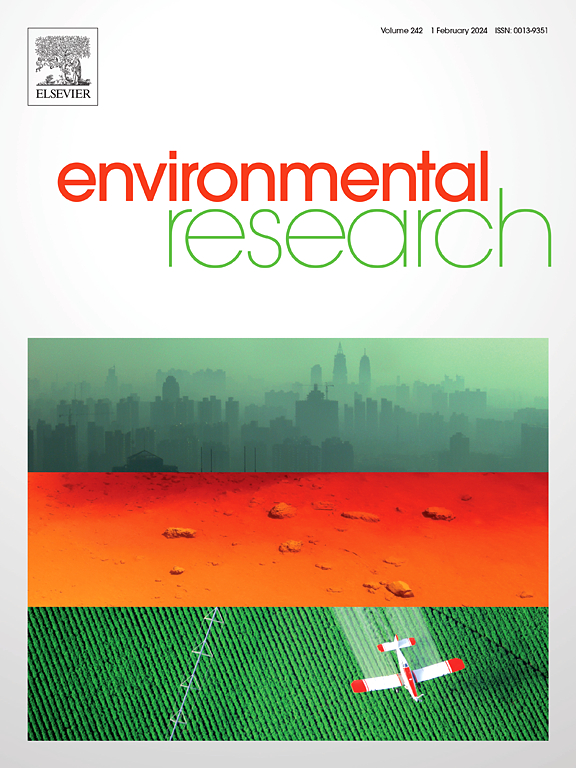Synergistic plant-fungal interactions under Phragmites australis - mangrove mixed growth regimes boost particulate organic carbon sequestration in estuarine wetlands
IF 7.7
2区 环境科学与生态学
Q1 ENVIRONMENTAL SCIENCES
引用次数: 0
Abstract
Estuarine wetlands, as globally critical carbon sink systems, rely heavily on the dynamics of soil particulate organic carbon (POC) to regulate carbon cycling. However, the mechanisms underlying how plant-fungal synergies under mixed plant communities drive POC accumulation remain unclear. This study focuses on the Min River Estuary wetlands, comparing the effects of mangrove wetland, Phragmites australis wetland, and mixed P. australis-mangrove wetland on soil POC and carbon components in particulate organic matter (POM). Mixed communities exhibit higher total biomass than monocultures. Fungal community analysis demonstrated that the relative abundances of Roussoella, Geosmithia, and Entorrhiza in mixed wetlands were significantly higher than in monoculture habitats (p < 0.05), with Geosmithia showing a significant positive correlation with POC (p < 0.05). Annual mean POC content in mixed wetlands surpassed mangrove and P. australis monocultures by 29.31 % and 28.69 %, respectively. RDA analysis revealed that aboveground biomass (AGB), belowground biomass (BGB), Papiliotrema, and Phaeomyces were the primary factors driving variations in POC. Collectively, mixed plant communities enhance POC accumulation by promoting diverse litter inputs and fungal-driven lignin decomposition-stabilization pathways. These findings elucidates the synergistic plant-fungal interactions driving POC accumulation in estuarine wetlands under mixed plant communities, providing a theoretical foundation for enhancing coastal wetland carbon sequestration and refining predictions of carbon cycling under global change.
芦苇-红树林混合生长条件下植物-真菌的协同作用促进了河口湿地颗粒有机碳的固存
河口湿地作为全球关键的碳汇系统,其碳循环的调节主要依赖于土壤颗粒有机碳(POC)的动态。然而,混合植物群落中植物-真菌协同作用驱动POC积累的机制尚不清楚。以岷江河口湿地为研究对象,比较了红树林湿地、芦苇湿地和芦苇-红树林混合湿地对土壤POC和颗粒有机质(POM)碳组分的影响。混合群落的总生物量高于单一群落。真菌群落分析表明,混合湿地中Roussoella、Geosmithia和Entorrhiza的相对丰度显著高于单一生境(p <;0.05),地质smithia与POC呈显著正相关(p <;0.05)。混合湿地的年平均POC含量分别比单一红树林和南方紫杉林高29.31%和28.69%。RDA分析表明,地上生物量(AGB)、地下生物量(BGB)、Papiliotrema和Phaeomyces是影响POC变化的主要因素。总的来说,混合植物群落通过促进不同的凋落物输入和真菌驱动的木质素分解-稳定途径来增强POC积累。这些发现阐明了混合植物群落下植物-真菌协同作用驱动河口湿地POC积累,为增强全球变化下滨海湿地碳固存和完善碳循环预测提供了理论基础。
本文章由计算机程序翻译,如有差异,请以英文原文为准。
求助全文
约1分钟内获得全文
求助全文
来源期刊

Environmental Research
环境科学-公共卫生、环境卫生与职业卫生
CiteScore
12.60
自引率
8.40%
发文量
2480
审稿时长
4.7 months
期刊介绍:
The Environmental Research journal presents a broad range of interdisciplinary research, focused on addressing worldwide environmental concerns and featuring innovative findings. Our publication strives to explore relevant anthropogenic issues across various environmental sectors, showcasing practical applications in real-life settings.
 求助内容:
求助内容: 应助结果提醒方式:
应助结果提醒方式:


